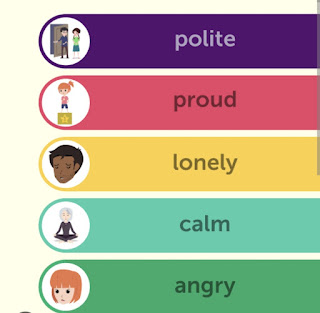Introdução:
Adjectives are the secret sauce that adds flavor and vibrancy to the English language. These descriptive words have the power to transform simple sentences into vivid expressions, making your communication more engaging and precise. Whether you're a beginner eager to learn or a seasoned English speaker looking to refine your skills, understanding adjectives is a fundamental step towards mastering the language. In this blog post, we'll delve into the world of adjectives in English, exploring their types, usage, and tips for using them effectively.
What Are Adjectives?
- Adjectives are words that modify nouns or pronouns, providing additional information about them.
- They help answer questions like "What kind?" "Which one?" "How many?" and "How much?"
Types of Adjectives:
- Descriptive Adjectives: These adjectives provide specific details about a noun, such as its color, size, shape, or appearance. For example, "blue sky," "large elephant," "round table."
- Demonstrative Adjectives: These adjectives indicate which noun you're referring to and include words like "this," "that," "these," and "those." For example, "this book," "those shoes."
- Quantitative Adjectives: These adjectives express the quantity or number of nouns and include words like "many," "few," "several," and "all." For example, "many books," "few students."
- Possessive Adjectives: These adjectives show ownership or possession and include words like "my," "your," "his," "her," "its," "our," and "their." For example, "my car," "their house."
Placement of Adjectives:
- In English, adjectives usually appear before the noun they modify. For example, "a beautiful flower" or "an interesting movie."
- However, some adjectives can come after the noun in certain cases, such as when emphasizing a particular quality or in poetic or literary expressions. For example, "The sky, so blue, stretched endlessly."
Adjective Order:
- When multiple adjectives are used to describe a single noun, there's a specific order they typically follow. This order is often referred to as the "OSASCOMP" rule: Opinion, Size, Age, Shape, Color, Origin, Material, and Purpose. For example, "a lovely little old round red Italian wooden coffee table."
Avoiding Common Mistakes:
- Don't confuse adjectives with adverbs. Adverbs modify verbs, adjectives, or other adverbs, while adjectives specifically modify nouns.
- Be mindful of irregular adjectives that don't follow the typical patterns, such as "good" and "better."
Conclusion:
Adjectives are like the artist's palette, allowing you to paint colorful and detailed pictures with your words in the English language. By understanding the various types of adjectives, their placement, and the order in which they should be used, you can elevate your language skills and communicate more effectively. So, embrace the power of adjectives, and watch as your English proficiency blossoms into a more vibrant and expressive form of communication. Happy adjective hunting!




